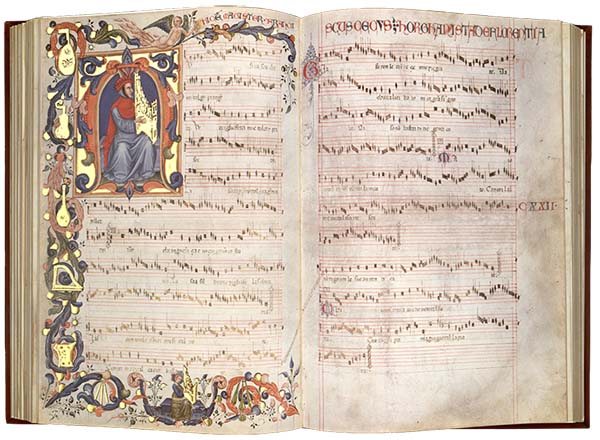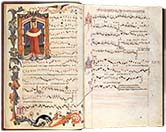 |
This example shows the portrait page of Gherardello da Firenze. Sixteen of Gherardello’s compositions are preserved in the codex. The design of this page is typical for the code: at the top, a cherub points to the composer’s name, written in Latin (as “Ghirardellus de Florentia”) across both leaves, with floral and other whimsical designs as further decoration. At the bottom of the left page, a black hound pursues a deer. |
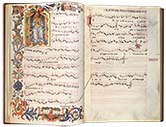 |
Lorenzo da Firenze, who composed seventeen of the works in this codex, appears in this example. Halfway down the page, two red birds can be seen, peeking from the top of the large blue flower. At the bottom of the page, a young woman picks flowers in a meadow, illustrating the text of the piece (“She has gone to Paradise”). |
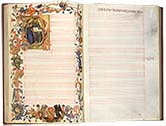 |
The codex remains unfinished, with some composers’ portraits adorning empty pages. Paolo Tenorista, also referred to as “Paulus, Abbes de Florentia,” is one such example. In his portrait, Paolo wears the traditional black robes of a Benedictine monk, as he sits listening to one of his students. Scholars have determined that, while no music appears on Paolo’s pages, his contribution is still quite significant: he compiled a collection of the compositions that eventually appeared in this codex. |
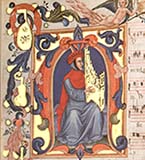 |
The vivid colors and brilliant gold ornamentation of the codex is readily apparent in this example, an enlargement of the portrait of Francesco Landini, who composed nearly half of the works included in the codex. Landini, whose name as given in the codex translates to “the blind organist from Florence,” is pictured with a portative, a small, portable pipe organ which frequently appears in artwork of the 14th and 15th centuries. His portrait is unique in the codex, because it is decorated with gold-ornamented musical instruments among the floral designs. |
